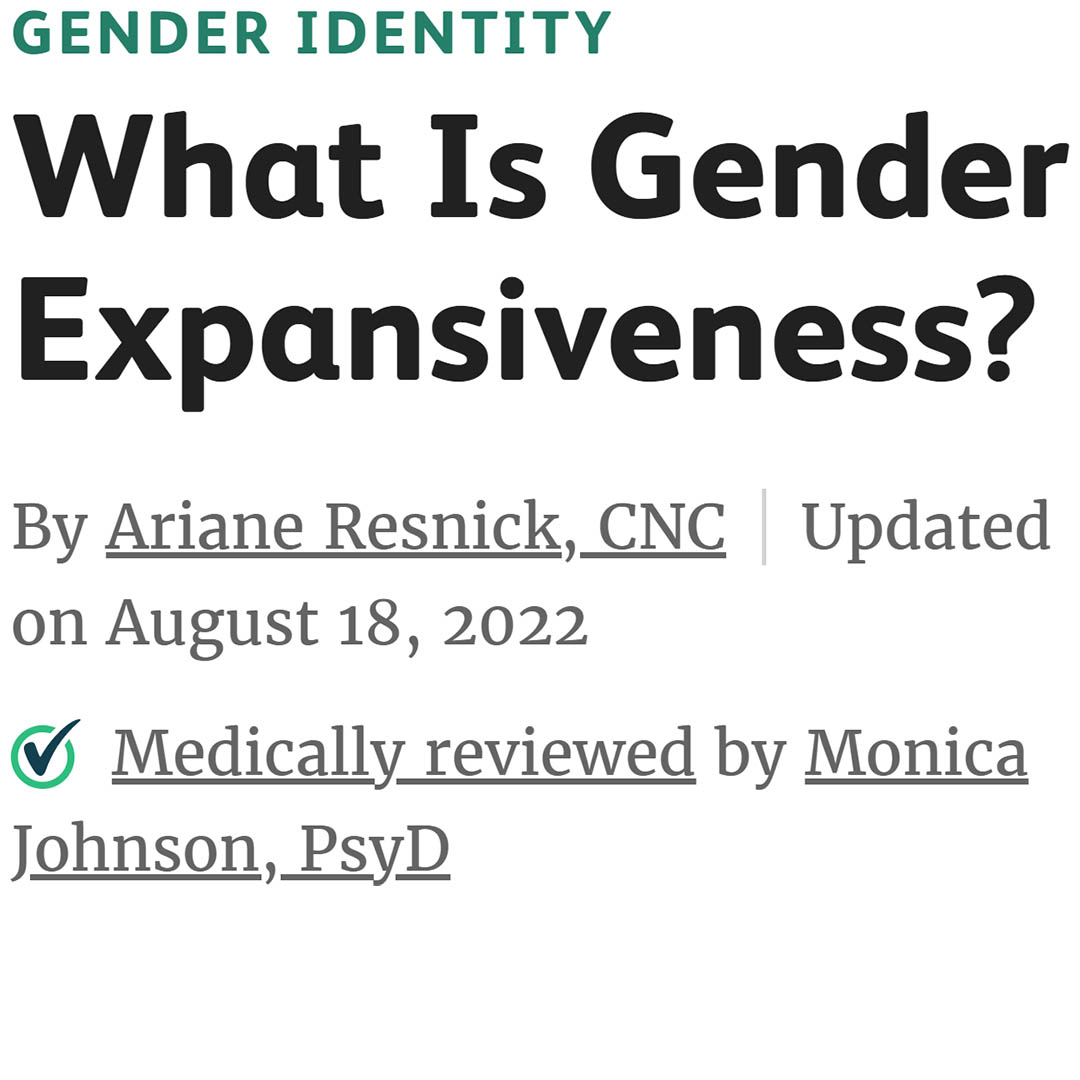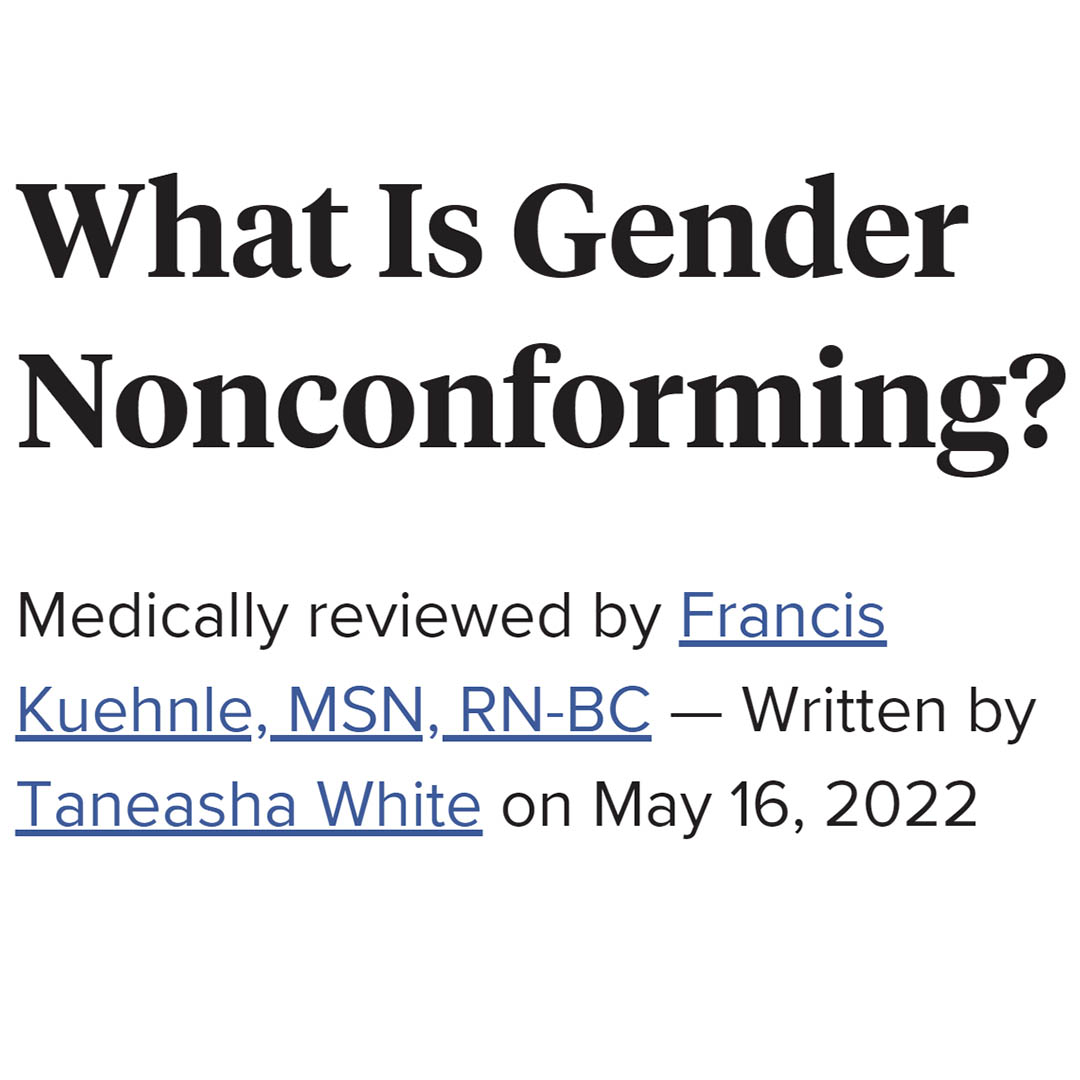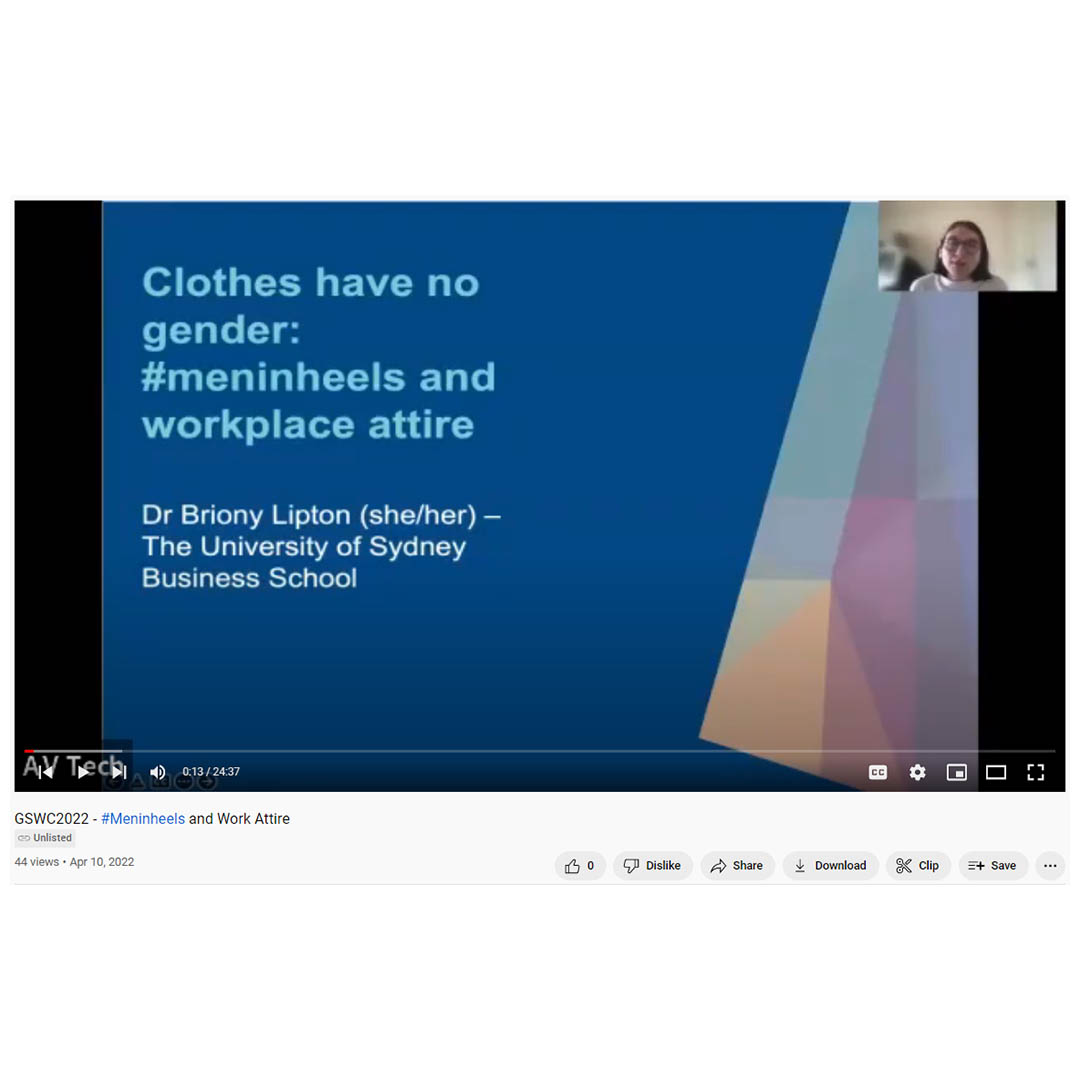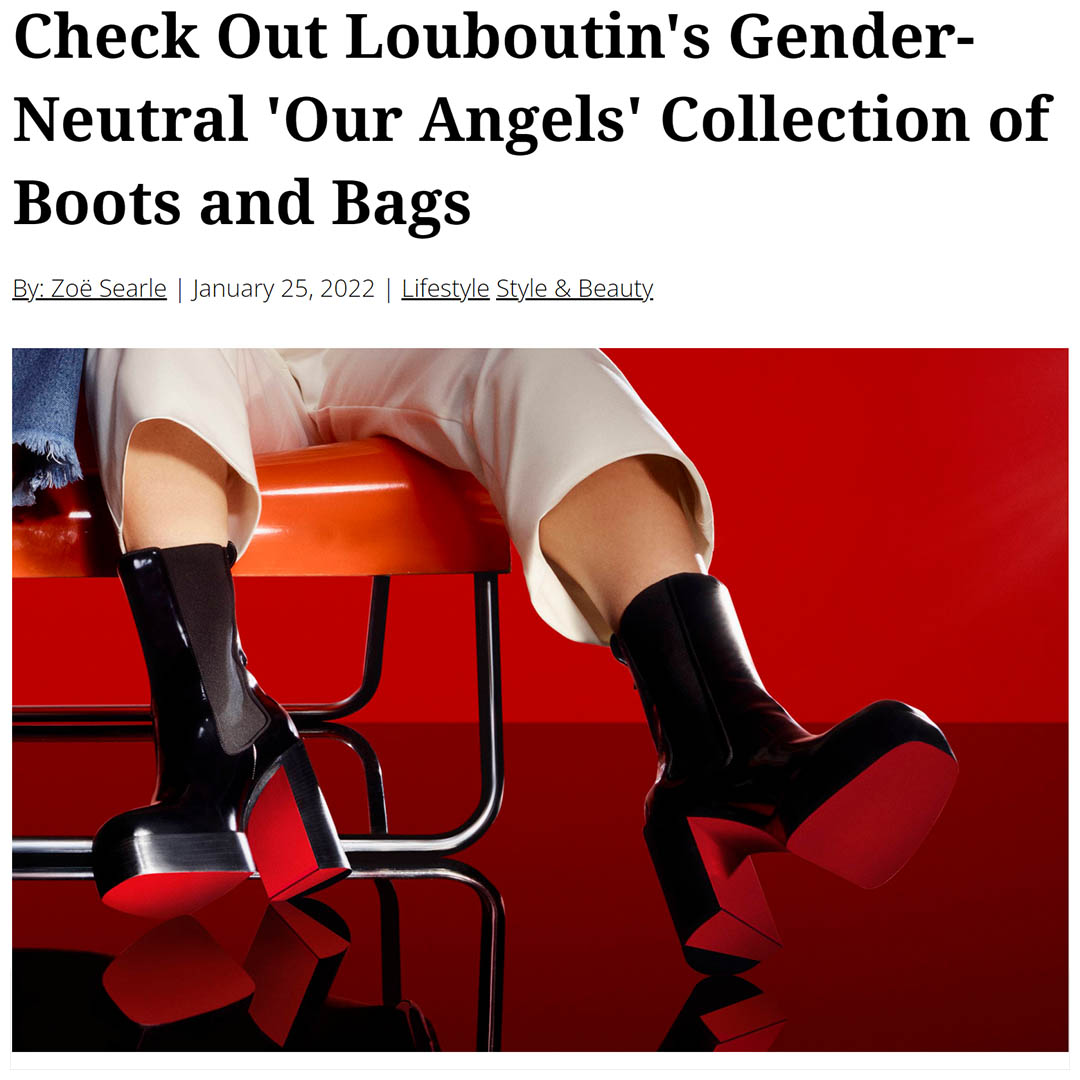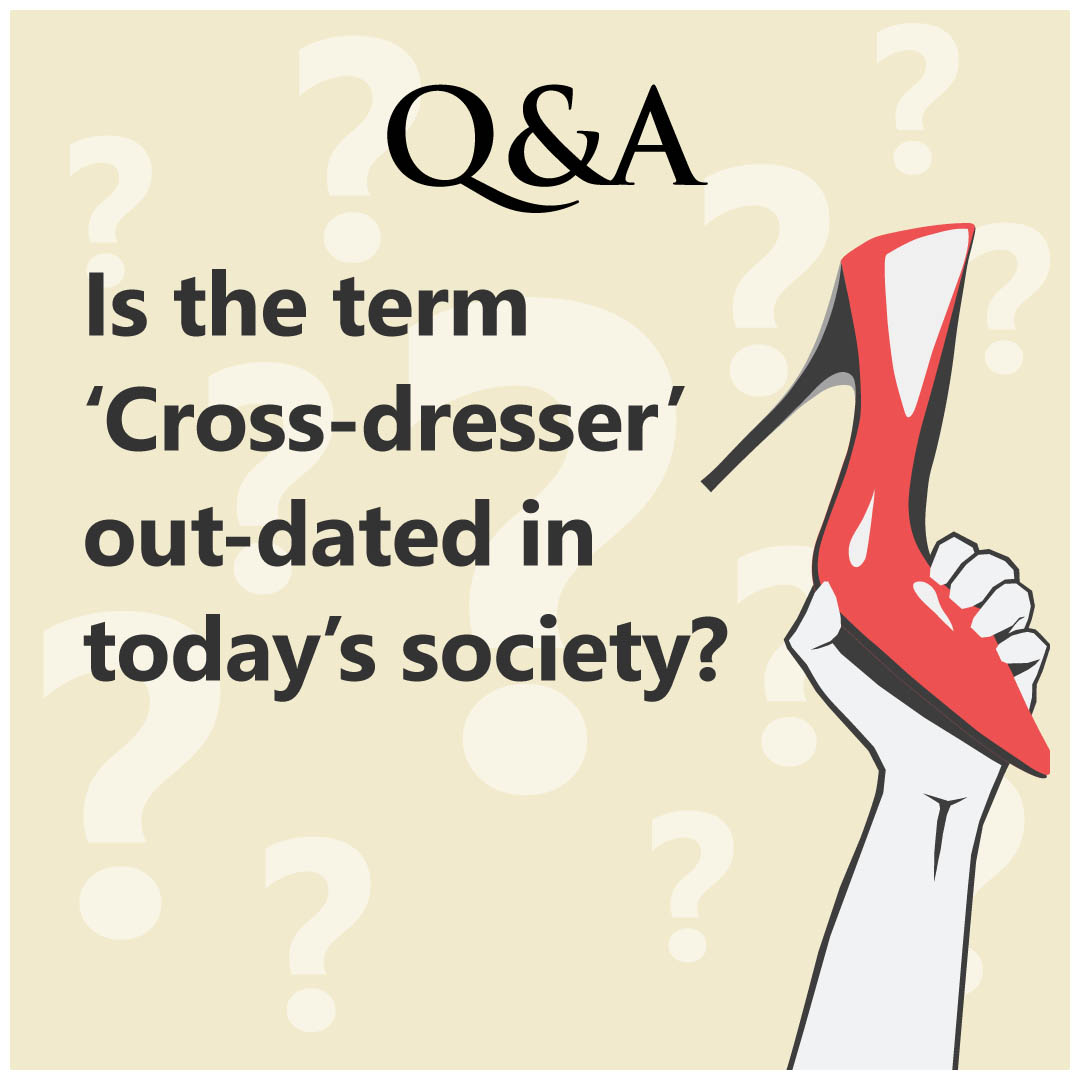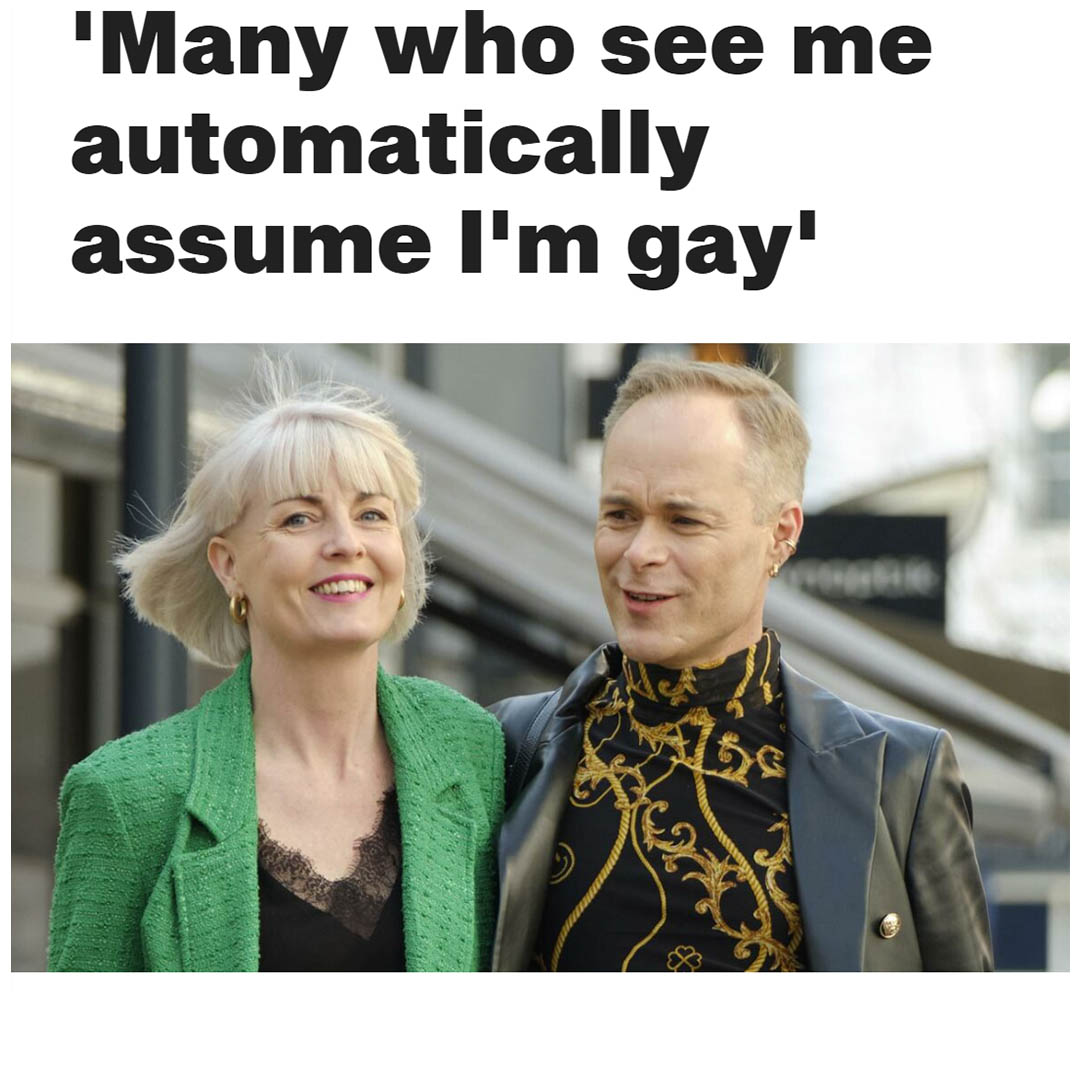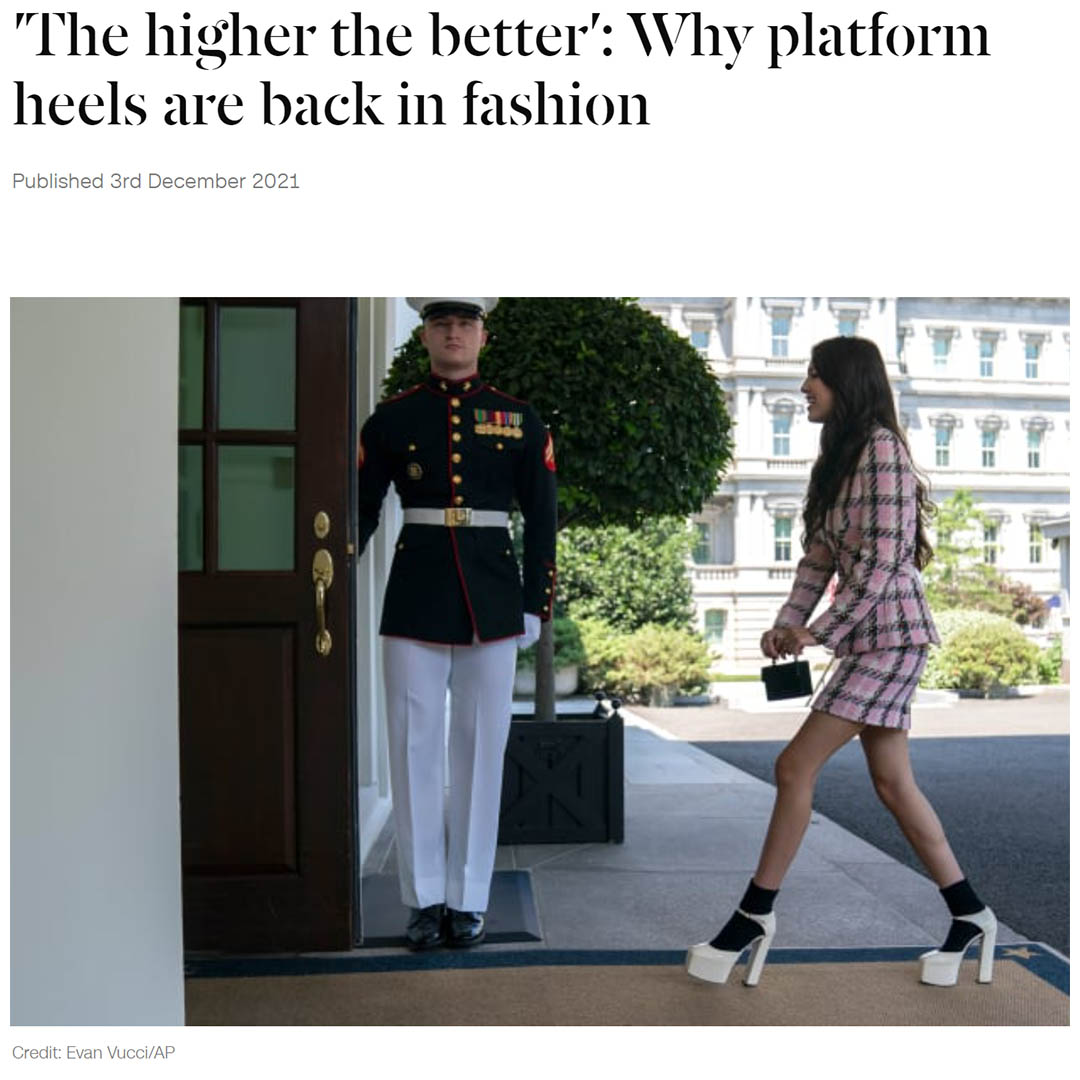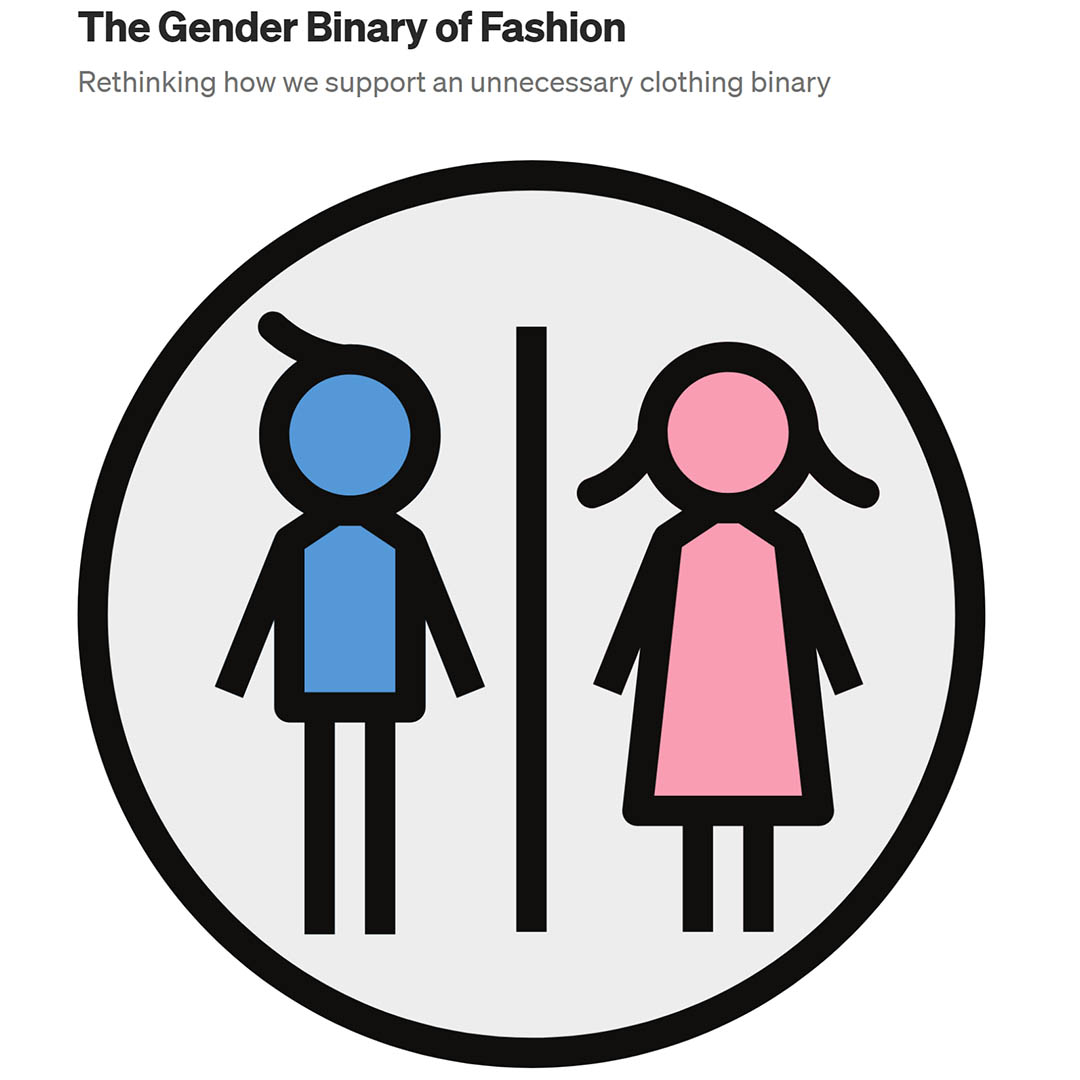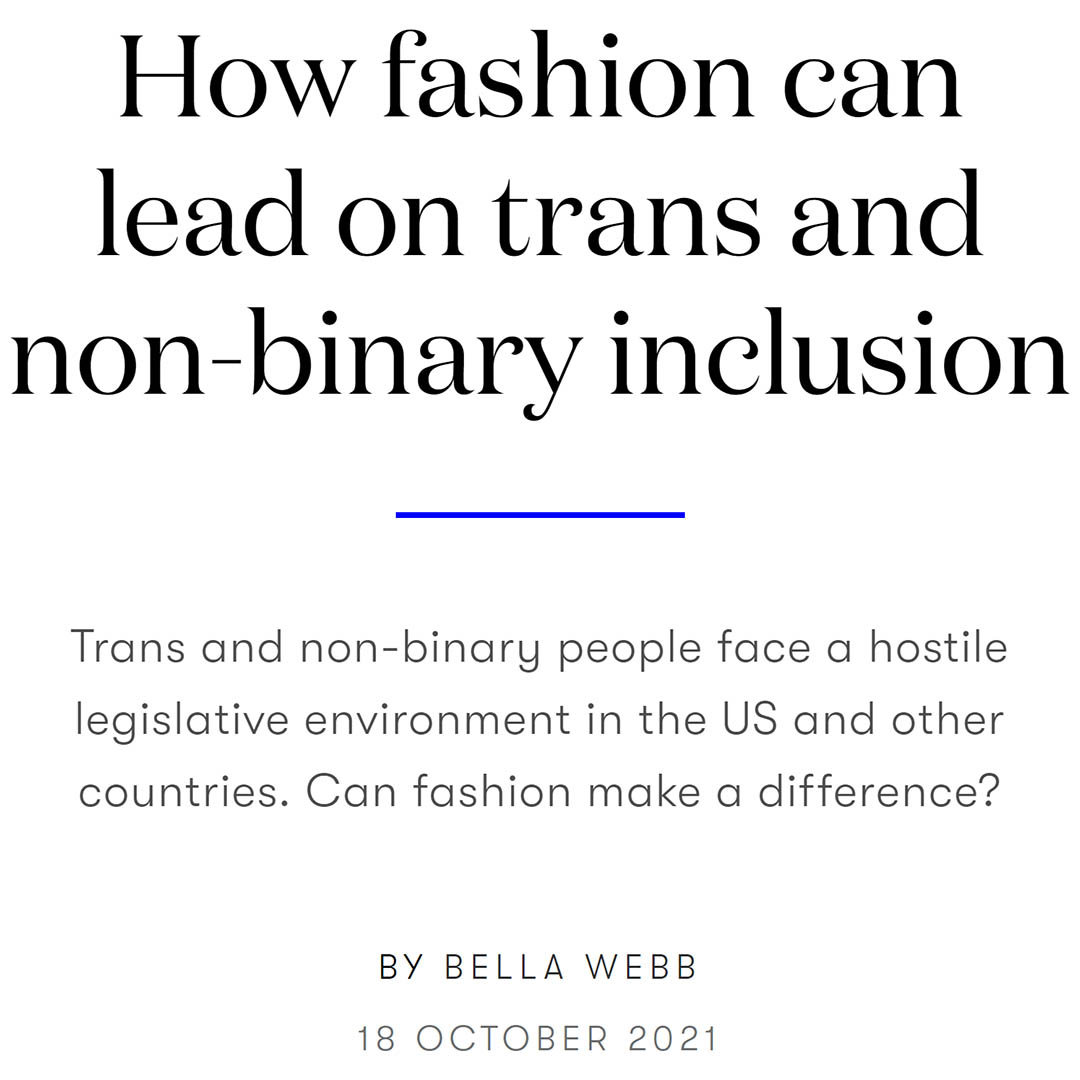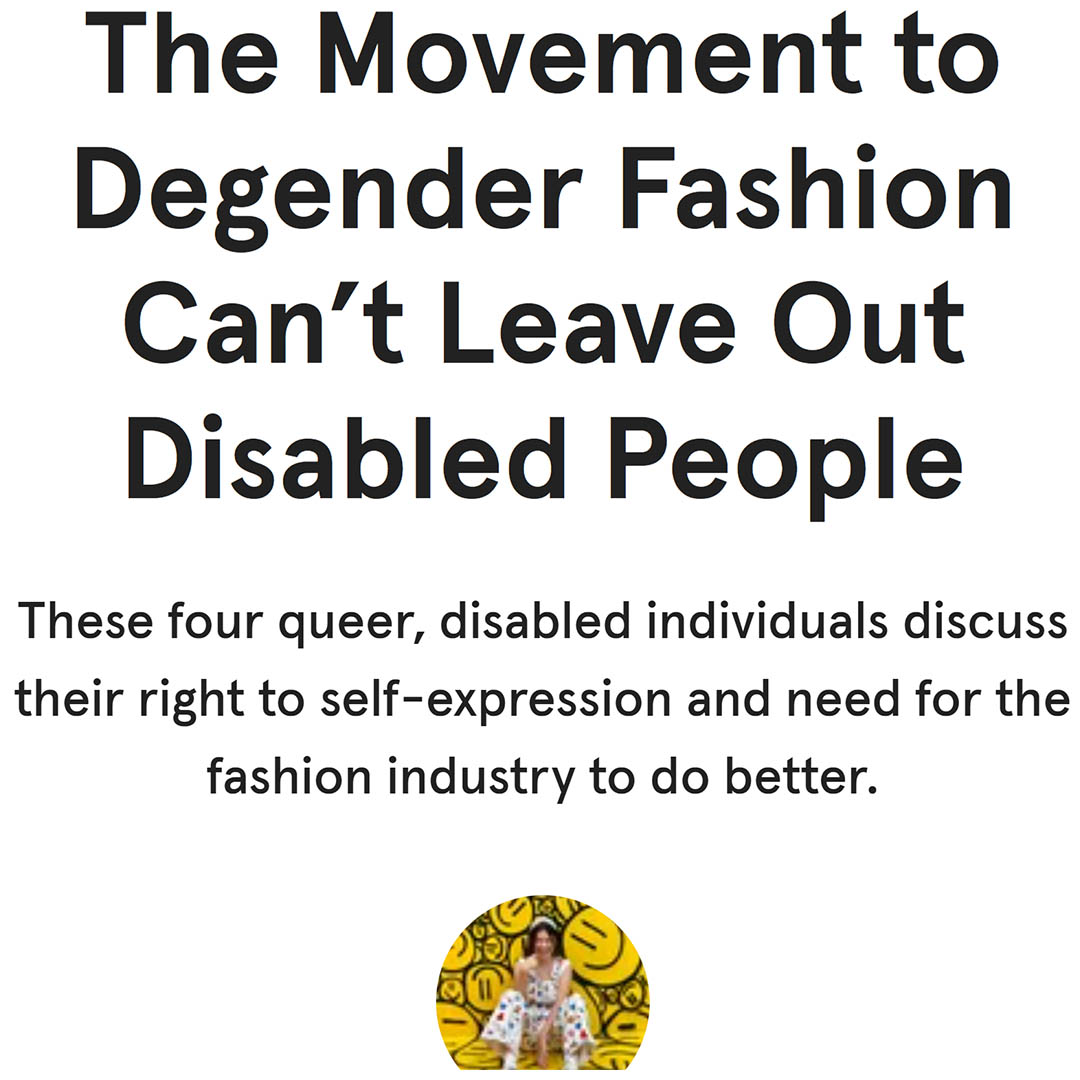Articles tagged with "Gender Expression"
Very Well Mind website explores the term "gender expansiveness", looking at its origins, what it means and how it's being used to classify people who cross normal lines of gender expression.
From the article:
"Gender expansiveness is an umbrella term for any expression of gender that falls outside of society's current gender binary standards."
"One person who has made a name for himself just by wearing clothing meant for the opposite gender is Eli Cohen, an author, speaker, fashion advocate, and "self-expression facilitator." He founded an organization called Spacious Human, with the tagline "Experiencing Expansiveness." Cohen is a cisgender man who began wearing dresses and skirts after the age of 50. He now teaches others how to explore their gender and their expressions of it."
"It can be challenging to put yourself out there in a way that makes you appear different than others, and you're opening yourself to judgment just by looking different or noticeable. However, some people feel that it's more important that society sees more than one version of humanity and expression, so they take on that potential judgment."
"Consider doing your research before asking anyone in your life about their gender expression. This saves others from having to perform emotional labor for you. It is considered polite to not ask people questions you could easily find the answers to yourself."
Original URL: https://www.verywellmind.com/what-is-gender-expansiveness-6362960
Posted: 2 December 2022
It's often a simple notion in your own head... "I like to wear heels and would like to wear them all the time". Ultimately you don't care what others think. You could be gender nonconforming. But what does that mean? This article from Psych Central unravels the meaning and puts it into context with other terms such as non-binary, genderqueer and genderfluid.
"Gender nonconformity is a way of expressing rejection of societal gender roles and expectations.
It isn’t automatically connected to a person’s gender identity or sexuality. Anyone of any gender identity can be gender nonconforming.
It’s best to inquire about how a person identifies and what pronouns they use rather than making any assumptions."
Original URL: https://psychcentral.com/health/gender-nonconforming
Posted: 27 October 2022
While many curious men explore their gender identity at home, often with items of clothing they've acquired by mail order services, they may consider showing up at their workplace in those items as an unattainable dream. There is however some serious research being done in this area by many people to determine the sociological effect of workplace attire and how people who are gender nonconforming, non-binary, genderqueer and so forth are challenging the norm in the workplace.
From the Gender Sexuality at Work Conference 2022, Dr Briony Lipton gives this compelling presentation of her work on "Men In Heels And Workplace Attire" which forms part of a larger project "Invisibilities Of Gendered Inequality In The Age Of Remote And Hybrid Work". Her research on gender equality and changes in professional attire is particularly interesting as it addresses a fundamental shift in our pandemic and post-pandemic work lives where many of us now regularly work from home, or have a hybrid home/office arrangement with who we work for.
She explores "Queer Heterosexuality" and whether there are ways in which straight men can disrupt the dominant paradigm of the straight-masculine and whether this can help to communicate, challenge and influence organisations and individuals perceptions of gender and sexual identities and their perceptions of equality and inclusion in the workplace.
With notable mentions of @MarkBryan911, @The_Heads_Count, @AlokVMenon, @TheeBillyPorter, @GentlemanHeels and @Mens.Heels.Revolution there are a number of other Instagram accounts featured in the video which we'll leave you to discover for yourselves.
Original URL: https://www.youtube.com/watch?v=_UCe441EoYI&list=PLhOObpoQndRlSrCjtoprhSRUWCa_qqZ8h&t=4s
Posted: 15 October 2022
This Gotham magazine article features the debut of Christian Louboutin's "Our Angels" range of Gender-Neutral heels in inclusive sizing.
"Famed French luxury designer Christian Louboutin hears the cry for genderless shoes and styles"
"The styles are bold, to be sure, but in a wide range of sizes, they leave room for every big personality, regardless of gender identity or expression."
"You might want to try the leopard-print stage boots, made from kid leather and pony hair in brown."
"each aims to blend elegance and edge with a personal sense of self-expression."
"The shoes will range in sizes from 36 to 46, becoming the fashion house’s most extensive size range to date."
We think they look amazing. We'd love to hear what you think!
Original URL: https://gothammag.com/christian-louboutin-genderless-our-angels-boots-bags
Posted: 19 September 2022
Is the term ‘Cross-dresser’ out-dated in today’s society?
Before we can answer that question, some definitions may be useful.
Cross-dressing: is the act of wearing items of clothing not commonly associated with one's sex. Cross-dressing has been used for purposes of disguise, comfort, comedy, and self-expression in modern times and throughout history.
Almost every human society throughout history has had expected norms for each gender relating to style, colour, or type of clothing they are expected to wear, and likewise most societies have had a set of guidelines, views or even laws defining what type of clothing is appropriate for each gender.
The term "cross-dressing" refers to an action or a behaviour, without attributing or implying any specific causes or motives for that behaviour. Cross-dressing is not synonymous with being transgender.
Another term for cross-dressing is Transvestitism. Someone who engages in Cross-dressing/Transvestitism is called a Cross-dresser(CD)/Transvestite(TV), although the term Transvestite is now commonly considered outdated and disrespectful. The term Transvestite (often shortened to the slang term "Tranny") was historically used as a slur against people who wore clothes of the opposite sex. Cross-dresser is now a much more accepted term. Cross-dresser was coined by the transgender community.
MtF and FtM Cross-dresser: A man who dresses in women's clothing is a male to female (MtF) cross-dresser. a woman who dressing in men's clothing is a female to male (FtM) cross-dresser. For women, the term is seldom used and the wearing of trousers/pants/men's shirts is often discounted as cross-dressing. This is because in our current society, male clothing is often considered gender-neutral. Therefore when someone uses the term "cross-dresser", the focus shifts mainly towards a MtF cross-dresser.
With those definitions made, two additional points are important to recognise:
a). Cross-dressing as it relates to Transgender: Wearing clothes intended for the opposite sex does not mean that the person identifies as the opposite sex. It is different from being Transgender or Transsexual. When transgender people dress according to their gender identity it is not necessarily the same as cross-dressing.
It is important to know that a cross-dresser does not necessarily have body or gender dysphoria (gender dysphoria means feeling uncomfortable with their body and gender they were born with), they are perfectly happy with their gender assigned at birth and have no desire to change their sex, but simply enjoy being able to cross-dress from time to time. However, Transgender describes people who feel that their gender identity is different from their biological sex.
Most transgender people do not appreciate being called cross-dressers, and for good reason. As they are wearing clothes of their own gender identity they consider themselves, and should be considered by others as the gender they are dressing in. A Transgender woman wearing women's clothes is not a cross-dresser, nor is she a drag queen. She is just a woman. Similarly, a Transgender man, wearing men's clothes is not a cross-dresser, nor is he a drag king. He is just a man.
b). Cross-dressing as it relates to Drag: A cross-dresser should not be confused with drag queens/kings. Drag is a special form of performance art based on the act of cross-dressing. Drag queens are usually male performance artists who dress in female character. Drag Kings are mostly female performance artists who dress in male character.
Now, to get down to answering the question...
As gender refers to the socially constructed roles, behaviours, expressions and identities of girls, women, boys, men, and gender diverse people we can deconstruct that concept. While the term Cross-dresser works well for some people, as it has for years, for many others they do not feel that it works well for them. For non-binary or agender people (who don't identify with the gender binary of male & female) who want to wear certain clothes as part of their gender expression, feel that the term is obstructive and often offensive towards them. With the realisation that clothes have no gender, a skirt or a pair of trousers are essentially just coloured and textured fabric cut and sewn into a garment. The clothes know nothing of gender other than that assigned to them by their creator. The same, of course applies to shoes - high heels are not women's shoes... they are just high heels.
A growing number of people believe that today's socially constructed gender stereotypes don't serve us well in enabling fully inclusive gender expression that recognises our diversity. With the central fact that gender is a social construct, gender labelling of clothing is also a therefore also social construct and can equally be challenged and deconstructed. Gender labelling of clothing perpetuates the construct, but in more recent years this is slowly changing with manufacturers and retailers removing, or neutralising gender labelling on clothes and on signage in stores.
Manufacturers and retailers, now too numerous to mention, are also making items of clothing more traditionally intended for a single sex for both sexes, while recognising that the key differentiator is not actually our biological sex, but our body shape. Does the term cross-dresser still stand up when the clothes have no gender labels? Maybe not.
All clothing, of whatever shape, colour, texture or style has been worn by both sexes as normal daily wear at some point in history, so why do we have gendered clothing now? Visual communication is one of the many reasons we dress the way we do. Our gender identity is expressed visually through what we wear, as can be our social status or rank within an organisation. Sometimes our visual appearance, what we wear, make-up, hairstyle, skin colour, whether rightly or wrongly, can trigger others around us through our learned and often habituated social conditioning to make a judgement on how they should interact with us. Aside from organisational ranking, we should not treat people differently because of their appearance. Everyone is born equal and should be treated as such. Does what they wear really matter more than their actions and achievements as a person?
In conclusion, the term Cross-dresser is fine for a socially constructed world in which there is a gender binary, but it does not work well in a non-binary world where gender is expressed on a spectrum and where many believe that clothing has no gender to start with. When it comes to the use of the term today, if the logic used to describe a man in "women's" clothes as a crossdresser does not hold when applied to a woman wearing "men's" clothes - it's not logic, it's sexism.
When clothing has no gender there are no lines to "cross", hence no cross-dressing and why we therefore believe that the term cross-dresser is out-dated and should decline in use.
Posted: 27 July 2022
Danish magazine 'BT' brings us an interview with Charoline Wenke and Anders Harder Bjerresgaard, originally published in 'ALT for the ladies' magazine and translated here from Danish via Google Translate.
The article introduces us to the couple and their relationship journey, from their early days exploring Anders' gender fluid fashion style and his passion for high heels to present day, and some of the triumphs and challenges they have encountered along the way. It's not always been easy, but they are both very happy together and want to share their story in the hope that it will inspire others to explore their self-expression too.
Posted: 7 June 2022
CNN reports on the rise in platform heel wearing and explores some of the ideas why this is an emerging trend for both women and men.
Original URL: https://edition.cnn.com/style/article/platform-shoes-fashion-trend/index.html
Posted: 31 May 2022
This article from Medium suggests that maybe it's time to enable people to not feel limited in their fashion expression to the clothing sections that match the gender they were assigned at birth. It's a thought provoking read and certainly offers a step in the right direction.
Original URL: https://medium.com/gender-from-the-trenches/the-gender-binary-of-fashion-1a9d174e4a84
Posted: 10 May 2022
Vogue Business explores the issues around trans and non-binary inclusivity and how the fashion industry can take a lead in progression.
“Increasing Visibility of trans and non-binary models in advertising campaigns and catwalk shows also helps normalise gender inclusivity”
“The categories brands use to sell clothes also have an impact”... “Fashion has built up gender norms, so we need to de-gender fashion in general to move forward”.
Original URL: https://www.voguebusiness.com/fashion/how-fashion-can-lead-on-trans-and-non-binary-inclusion
Posted: 23 March 2022
them. magazine interviews four queer, disabled individuals who discuss their right to self-expression and need for the fashion industry to do better.
Original URL: https://www.them.us/story/degender-fashion-movement-cant-leave-out-disabled-people
Posted: 29 January 2022
